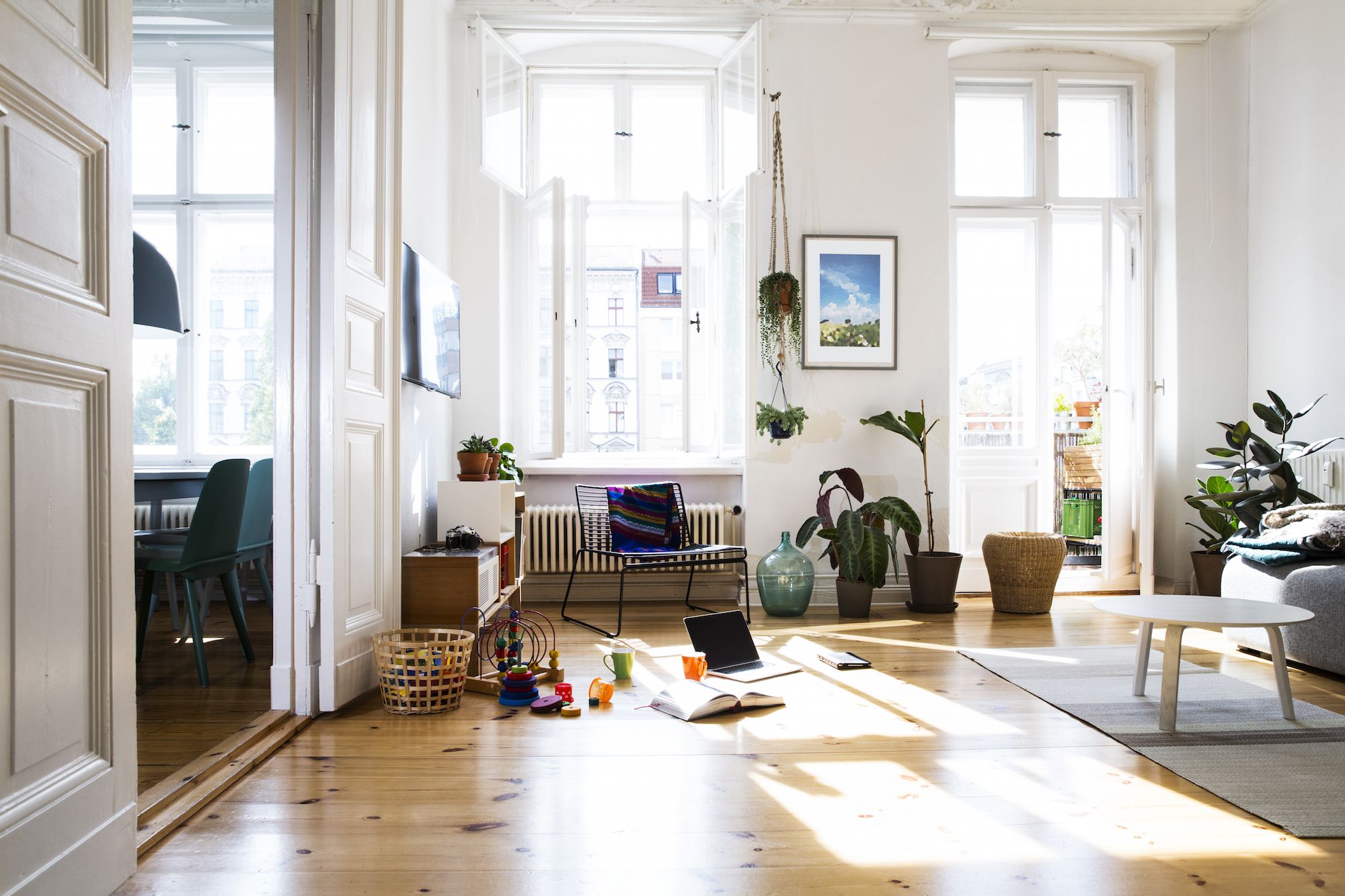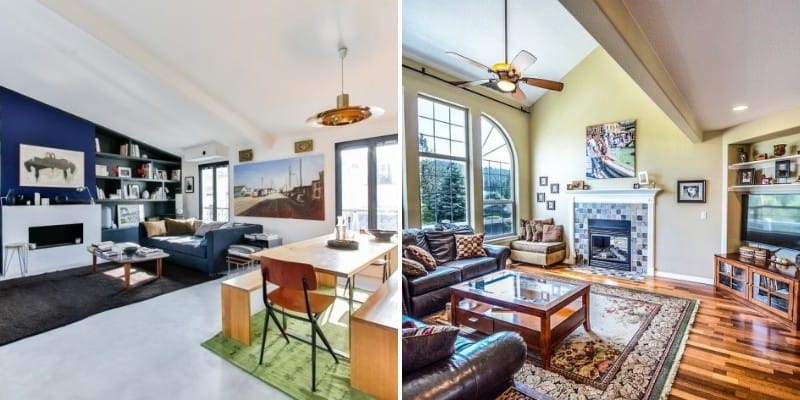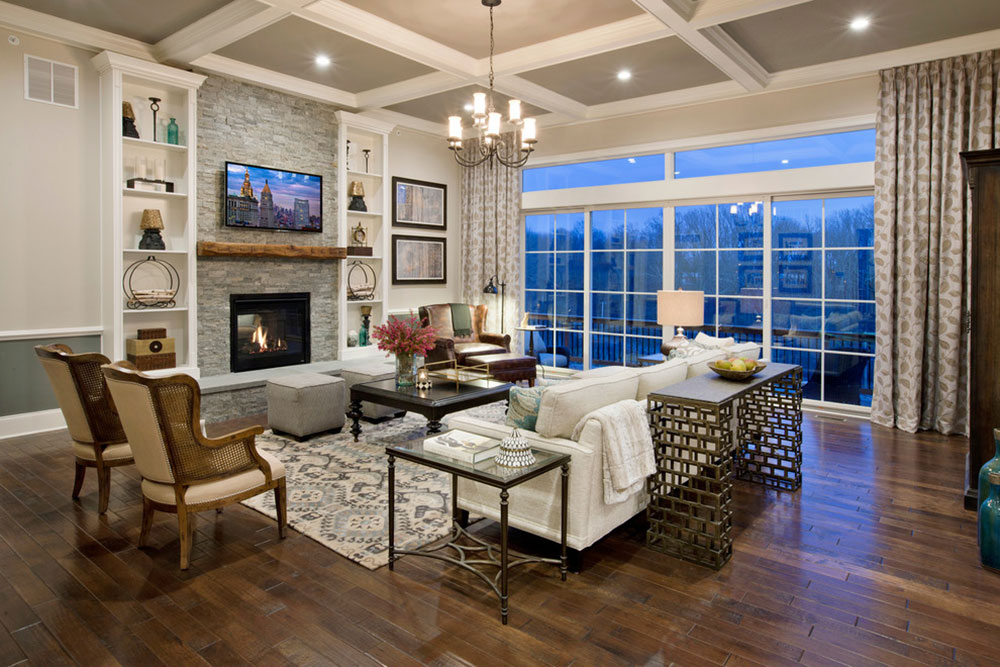When it comes to home design, two of the most commonly used terms are "living room" and "family room". While they may seem interchangeable, there are actually some key differences between the two. Understanding these differences can help you create a more functional and comfortable space for your family and guests. In this article, we'll delve into the top 10 main differences between living rooms and family rooms.Living Room vs Family Room: What's the Difference?
The living room and family room are both spaces in a home where people gather and relax. However, they serve different purposes and have distinct features that set them apart from each other. Here are the top 10 main differences between living rooms and family rooms:Key Differences Between a Living Room and a Family Room
The first difference between a living room and a family room is their location within the house. Typically, the living room is located near the front entrance of the house, while the family room is situated towards the back of the house. This placement allows for easier access to the living room for guests and visitors, while the family room is usually reserved for more casual gatherings with close friends and family.1. Location
The primary function of a living room is to entertain guests and provide a formal space for social gatherings. It is often used for hosting events, such as cocktail parties or formal dinners. On the other hand, the family room is a more relaxed space where family members can gather to watch TV, play games, or just spend quality time together.2. Function
The furniture in a living room is typically more formal and elegant, with a focus on providing comfortable seating for guests. This may include a sofa, armchairs, and a coffee table. In contrast, family rooms tend to have more casual and comfortable furniture, such as a sectional sofa, bean bags, and ottomans.3. Furniture
Since the living room is often the first room that guests see, it is usually designed with a more formal and sophisticated aesthetic. This may include elegant furniture, statement lighting, and decorative accents like artwork and sculptures. Family rooms, on the other hand, have a more laid-back design and are often filled with personal touches, such as family photos and children's artwork.4. Design and Décor
In a living room, the main source of entertainment is usually conversation and socializing. However, family rooms are equipped with more entertainment options, such as a TV, gaming console, or a stereo system. This makes it a popular spot for movie nights and game nights with the family.5. Entertainment Options
The location of the living room and family room also affects their levels of privacy. Since the living room is situated near the front entrance, it may not offer much privacy. In contrast, the family room, which is usually towards the back of the house, provides a more secluded space for family members to relax and unwind.6. Privacy
Living rooms are typically larger than family rooms, as they are designed to accommodate more people. This makes them ideal for hosting gatherings and events. Family rooms, on the other hand, are usually smaller and cozier, providing a more intimate setting for family time.7. Size
Another key difference between living rooms and family rooms is the type of flooring used. Living rooms often have more delicate flooring, such as hardwood or carpet, which may not be suitable for high-traffic areas. Family rooms, on the other hand, are designed for everyday use and may have more durable flooring, such as tile or laminate, that can withstand wear and tear.8. Flooring
The Importance of Creating a Distinct Living Room and Family Room Design

Distinguishing Between Living Room and Family Room
 When it comes to designing a house, one of the key decisions to make is how to plan the living spaces. Two of the most common rooms in a house are the living room and the family room. While these two rooms may seem similar, there are distinct differences between them. The living room is a more formal space, often used for entertaining guests or as a showcase for the home's design. On the other hand, the family room is a more casual and relaxed space, primarily used for spending time with family and friends. Understanding the differences between these two rooms and how to design them accordingly is crucial for creating a functional and comfortable living space.
When it comes to designing a house, one of the key decisions to make is how to plan the living spaces. Two of the most common rooms in a house are the living room and the family room. While these two rooms may seem similar, there are distinct differences between them. The living room is a more formal space, often used for entertaining guests or as a showcase for the home's design. On the other hand, the family room is a more casual and relaxed space, primarily used for spending time with family and friends. Understanding the differences between these two rooms and how to design them accordingly is crucial for creating a functional and comfortable living space.
The Purpose of the Living Room
 The living room, also known as the front room or parlor, is typically located at the front of the house and serves as the main social space. This room is usually more formal and is often used for hosting guests, social gatherings, and special occasions. The purpose of the living room is to create a welcoming and elegant atmosphere, with comfortable seating and a central focus point, such as a fireplace or a large window with a view. It is a space to showcase the homeowner's style and personality, making it an important room to design with careful consideration.
Keywords: living room, formal space, entertaining guests, showcase, home design, welcoming, elegant, central focus point, homeowner's style, personality.
The living room, also known as the front room or parlor, is typically located at the front of the house and serves as the main social space. This room is usually more formal and is often used for hosting guests, social gatherings, and special occasions. The purpose of the living room is to create a welcoming and elegant atmosphere, with comfortable seating and a central focus point, such as a fireplace or a large window with a view. It is a space to showcase the homeowner's style and personality, making it an important room to design with careful consideration.
Keywords: living room, formal space, entertaining guests, showcase, home design, welcoming, elegant, central focus point, homeowner's style, personality.
The Function of the Family Room
 In contrast to the living room, the family room is a more relaxed and casual space, typically located at the back of the house and connected to the kitchen. This room serves as a place for families to gather and spend quality time together, whether it's watching TV, playing board games, or simply having a conversation. The family room is designed to be comfortable and functional, with plenty of seating and storage for toys, books, and other items. It is often the heart of the home, where memories are made and shared.
Keywords: family room, relaxed, casual space, connected to kitchen, gather, quality time, comfortable, functional, seating, storage, memories.
In contrast to the living room, the family room is a more relaxed and casual space, typically located at the back of the house and connected to the kitchen. This room serves as a place for families to gather and spend quality time together, whether it's watching TV, playing board games, or simply having a conversation. The family room is designed to be comfortable and functional, with plenty of seating and storage for toys, books, and other items. It is often the heart of the home, where memories are made and shared.
Keywords: family room, relaxed, casual space, connected to kitchen, gather, quality time, comfortable, functional, seating, storage, memories.
The Importance of Designing Both Rooms
 While the living room and family room have different purposes, they both play important roles in a house. Having a distinct living room and family room design not only creates a functional and organized living space, but also adds value to the home. A well-designed living room can impress guests and add a touch of elegance to the house, while a cozy family room can make the home feel warm and inviting. By understanding the differences between these two rooms and designing them accordingly, homeowners can create a harmonious and comfortable living environment for both themselves and their guests.
Keywords: design, living room, family room, functional, organized, value, well-designed, impress, elegance, cozy, harmonious, comfortable.
While the living room and family room have different purposes, they both play important roles in a house. Having a distinct living room and family room design not only creates a functional and organized living space, but also adds value to the home. A well-designed living room can impress guests and add a touch of elegance to the house, while a cozy family room can make the home feel warm and inviting. By understanding the differences between these two rooms and designing them accordingly, homeowners can create a harmonious and comfortable living environment for both themselves and their guests.
Keywords: design, living room, family room, functional, organized, value, well-designed, impress, elegance, cozy, harmonious, comfortable.
In Conclusion
 In conclusion, while living room and family room may seem similar, they serve different purposes and should be designed accordingly. The living room is a formal space for entertaining guests and showcasing the homeowner's style, while the family room is a more casual and relaxed space for spending time with loved ones. Understanding the differences between these two rooms and their functions is crucial for creating a well-designed and comfortable living space.
In conclusion, while living room and family room may seem similar, they serve different purposes and should be designed accordingly. The living room is a formal space for entertaining guests and showcasing the homeowner's style, while the family room is a more casual and relaxed space for spending time with loved ones. Understanding the differences between these two rooms and their functions is crucial for creating a well-designed and comfortable living space.


















:max_bytes(150000):strip_icc()/6B2A0986-69199dad8c7b4b62b37bf73ef5a0095d.jpg)











